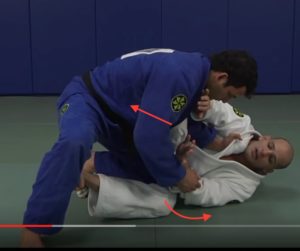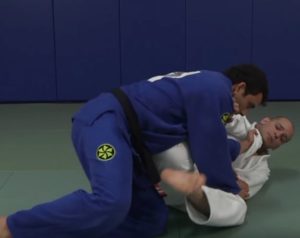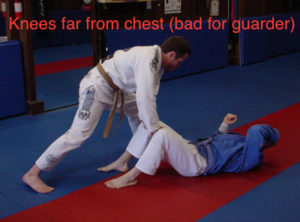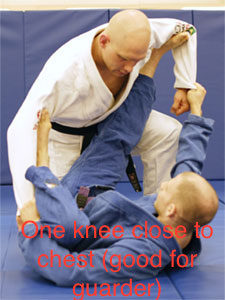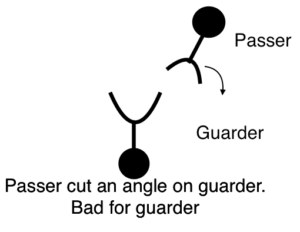Please take a look at my post ‘Open guard retention principles‘ for more on open guard retention.
Defending and countering the leg weave guard pass
To clarify exactly what I mean by the leg weave guard pass, see this video:
Stephan Kesting: ‘Pressure-Style Guard Pass by BJJ World Champion Rodolfo Vieira’
The key principles are:
Prevention: Don’t let your knees come together
This type of pass invariably involves the top person pinning your knees together and weaving his arms through your legs. To prevent it, keep your knees flared out apart from each other.
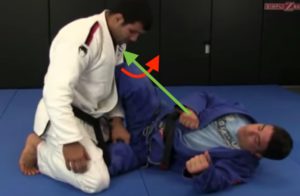
At this stage, the bottom player in blue should push the shoulder with his right hand, pull his right knee in towards his chest, and flare his right knee outward.
Prevention: leg scissor
Again, we want to prevent our legs from being pinned together. If we can’t move the right leg, then we need to move the left leg. In order to extract it, we’re going to push into the opponent with the right knee, and pull the left knee out and establish a full open guard (as opposed to half).
The problem is that the left leg is pinned between our opponent’s knees. So we need to push our hips forward and move our head back, to create the space to pull the left knee out.
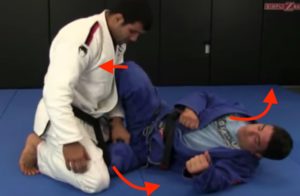
Watch this video by Xande Ribeiro for an example of this movement.
Push the opponent’s head to the same side his legs are going
The pass works by using the passer’s head to push the bottom person’s shoulder one way, while using the leg weave to rotate the bottom person’s knees the other way.

So the bottom person’s goal should be to keep his hips and shoulders aligned, facing the same direction. In order to do that, we can push the opponent’s head to the same side their legs are going, which will remove the rotational pressure on our shoulder.
See this video ‘Defending the leg weave pass’ by Brent Littell, for an example of this dynamic. Note that I prefer to push the head rather than grab the sleeve, but if you just watch the body positioning, you can see that he’s keeping himself aligned.
Sit up escape
If all else fails, set up the Marcelo Garcia style sit up escape:
This escape is ideal for use immediately after your opponent passes your guard, since it works best when your opponent is at a low angle near your legs. Note that the sit up escape requires you to turn your knees away from your opponent, but the leg weave pass ends with your knees pointing towards your opponent. So, you simply set up the frame, wait until they release the leg weave with their arms and then go.
Related:
